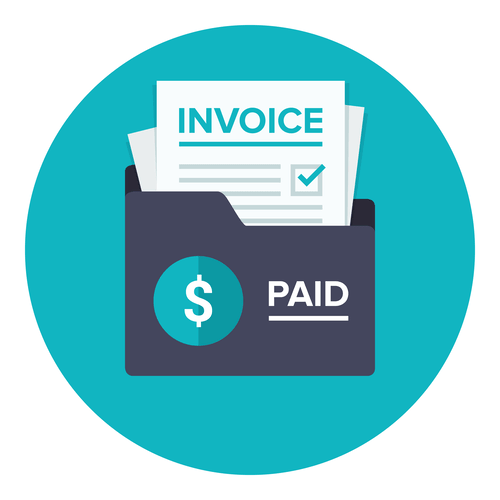

To understand cash flow, it’s essential to differentiate between cash inflows and cash outflows. Unlevered free cash flow is the cash flow a business has, without accounting for any interest payments. Likewise, each business could have a different payment structure and interest rate with their debtors, so UFCF creates a level playing field for comparative analysis. It’s the money available to investors, company management, shareholder dividends, and investments back into the business. While depreciation is an expense that reduces a company’s net income, it doesn’t represent an actual cash outflow. As a result, depreciation is added back into the cash flow statement to determine the real cash generated by operating activities.


Everything You Need To Master Financial Modeling
Subsequently, the net change in cash amount will then be added to the beginning-of-period cash balance to calculate the end-of-period cash balance. The impact of non-cash add-backs is relatively straightforward, as these have a net positive impact on cash flows (e.g. tax savings). The net income as shown on the income statement – i.e. the accrual-based “bottom line” – can therefore be a misleading depiction of what is actually occurring to the company’s cash and profitability. However, because of accrual accounting, net income doesn’t necessarily mean that all receivables were collected from customers. When it continues over a number of consecutive periods, it demonstrates that a company is capable of healthy operations and can grow successfully. It is also essential to monitor how cash flow increases as sales increase since it’s important that they move at a similar rate over time.
Want More Helpful Articles About Running a Business?
Under the direct method, the information contained in the company’s accounting records is used to calculate the net CFO. Send invoices, get paid, track expenses, pay your team, and balance your books with our financial management software. EBITDA is good because it’s easy to calculate and heavily quoted so most people in finance know calculate cash flow from assets what you mean when you say EBITDA. With the assets and liabilities side of the balance sheet complete, all that remains is the shareholders’ equity side. For our long-term assets, PP&E was $100m in Year 0, so the Year 1 value is calculated by adding Capex to the amount of the prior period PP&E and then subtracting depreciation.
- Using the indirect method, calculate net cash flow from operating activities (CFO) from the following information.
- It represents all the cash available for operating expenses, investments, and financing activities.
- The items need to be adjusted when calculating cash flow from operating activities because they are considered elsewhere in the cash flow statement (e.g., investing activities or financing activities).
- As one of the three main financial statements, the CFS complements the balance sheet and the income statement.
What is the difference between direct and indirect cash flow statements?
- At first, it can be challenging, but you will manage your business finances better once you get the hang of things.
- It produces what is called the net cash flow by breaking down where the changes in the beginning and ending balances came from.
- Thomas’ experience gives him expertise in a variety of areas including investments, retirement, insurance, and financial planning.
- Value investors often look for companies with high or improving cash flows but with undervalued share prices.
- Calculating cash flow from assets is helpful because of the insights it provides into your company’s financial health, efficiency, and operational effectiveness.
Cash flow analysis can provide valuable insights into a business’s financial health and help you make informed decisions about investments, pricing, and resource allocation. By understanding your cash flow position, you can identify areas for improvement, manage risk, and enhance your overall business performance. Some investors prefer to use FCF or FCF per share rather than earnings or earnings per share (EPS) as a measure of profitability. This is because earnings and EPS remove non-cash items from the income statement. However, because FCF accounts for investments in property, plant, and equipment (PP&E) it can be lumpy and uneven over time. Free cash flow would, generally, show problems before EBIT or earnings per share covered in our earnings per share calculator.


- The CFS is distinct from the income statement and the balance sheet because it does not include the amount of future incoming and outgoing cash that has been recorded as revenues and expenses.
- If the company’s debt payments are deducted from free cash flow to the firm (FCFF), a lender would have a better idea of the quality of cash flows available for paying additional debt.
- To do this, make sure you locate the total cash inflow and the total cash outflow.
- This information is vital for future planning, aiding in accurate budgeting and forecasting.
- The indirect method begins with net income or loss from the income statement, then modifies the figure using balance sheet account increases and decreases, to compute implicit cash inflows and outflows.
- However, because this issue was widely known in the industry, suppliers were less willing to extend terms and wanted to be paid by solar companies faster.
- This could mean trouble ahead if, for instance, cash flowing from the sale of investments is being used to pay operating expenses.
Cash flow analysis examines the cash that flows into and out of a company—where it comes from, what it goes to, and the amounts for each. The net cash flow figure for any period is calculated as current assets minus current liabilities. The cash flow statement complements the balance sheet and income statement. It is part of a public company’s financial reporting requirements since 1987. Cash flow from financing activities provides investors insight into a company’s financial strength and how well its capital structure is managed.


Consequently, investors shall decide to pursue efficacy or efficiency, respectively. The name is not standardized, but you will usually find it as net cash provided from operating activities or similar. The free cash flow calculator is a tool that helps you compute the free cash flow (FCF) value, one of the most important financial information for an investor. In this post, we will explore what is free cash flow based on the free cash flow definition of cash from operations minus capital expenditures.
- It is these operating cash flows which must, in the end, pay off all cash outflows relating to other activities (e.g., paying loan interest, dividends, and so on).
- The first step in calculating CFFA is determining Operating Cash Flow, though you may also see this referred to as cash flow from operations.
- There are several ways to improve cash flow, such as speeding up collections, negotiating better terms with suppliers, reducing unnecessary expenses, and optimising inventory levels.
- Earnings happen in the present when a sale and expense are made, but cash inflows and outflows can occur at a later date.
- From an accounting standpoint, the company might be profitable, but if receivables become past due or uncollected, the company could run into financial problems.
- It also helps investors and creditors assess the financial health of the company.


. Gather Financial Statements



No Comments